Western Tarsiers
- March 25, 2024
- 0 comment
Western Tarsiers, enchanting creatures of the night, inhabit the lush forests of Southeast Asia, captivating observers with their distinctive features and elusive nature. These small primates, belonging to the Tarsiidae family, are renowned for their large, luminous eyes adapted for nocturnal activities. With fur ranging from light brown to gray, they blend seamlessly into their arboreal habitat, where they spend their days resting in dense vegetation and emerge under the cover of darkness to forage for insects and small vertebrates.
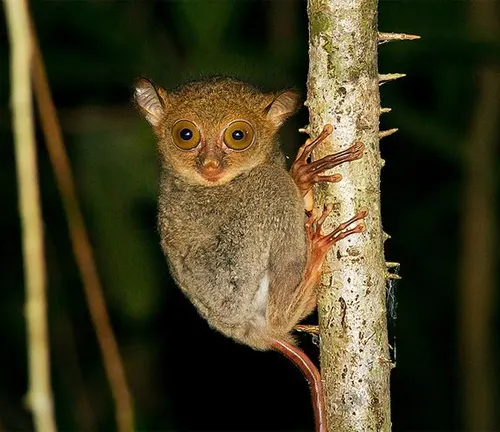
Solitary by nature, Western Tarsiers communicate through an array of vocalizations, from chirps to whistles, to establish territory and attract mates. Despite their diminutive size, they are agile hunters, relying on sharp claws and exceptional night vision to capture prey. Facing threats from habitat loss and fragmentation, conservation efforts strive to safeguard their forest homes and ensure the survival of these enchanting creatures for generations to come.
Western Tarsiers Characteristics
| Specifications | Description |
|---|---|
| Scientific Name | Tarsius |
| Family | Tarsiidae |
| Habitat | Tropical forests, including rainforests |
| Geographic Range | Southeast Asia, including Indonesia, Malaysia, Philippines |
| Size | 10 to 15 centimeters in length (excluding tail) |
| Weight | 80 to 160 grams |
| Fur Color | Light brown to gray |
| Diet | Primarily insectivorous, also small vertebrates |
| Activity Pattern | Nocturnal |
| Social Structure | Solitary or small family groups |
| Communication | Vocalizations such as chirps and whistles |
| Predators | Birds of prey, snakes, carnivorous mammals |
| Conservation Status | Vulnerable due to habitat loss and fragmentation |
Exploring the Mysteries of Western Tarsiers
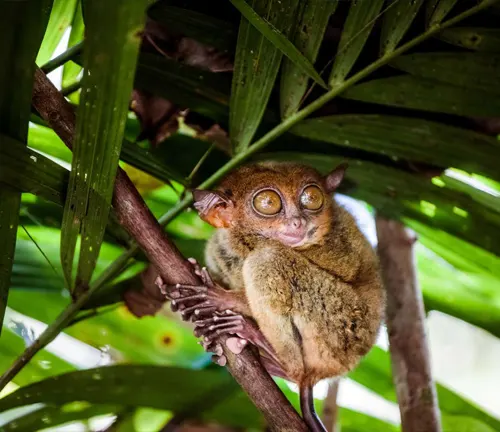
Western Tarsiers, often referred to as “the tiny primates of the night,” are intriguing creatures that inhabit the forests of Southeast Asia. With their large eyes, long hind limbs, and distinctive vocalizations, these small primates have captivated the interest of researchers and wildlife enthusiasts alike. In this article, we delve into the world of Western Tarsiers, exploring their habitat, behavior, diet, and conservation status
What are Tarsiers?
Tarsiers are small primates belonging to the Tarsiidae family, characterized by their unique physical features such as elongated ankle bones (tarsus) and large eyes. They are nocturnal creatures, primarily active during the night.
Distinctive features of Western Tarsiers
Western Tarsiers are known for their large, round eyes, which are adapted for night vision. They also have elongated fingers and toes, aiding them in grasping branches as they move swiftly through the forest canopy.
Habitat and Distribution
Natural habitat
Western Tarsiers inhabit tropical forests, including lowland rainforests, mangrove swamps, and secondary forests. They are arboreal creatures, spending most of their lives in the trees. Their habitat typically consists of dense vegetation, providing ample cover and opportunities for foraging. These forests offer a diverse array of plant species, which in turn support a rich variety of insect and small vertebrate prey for the tarsiers to feed on.

Geographic distribution
Western Tarsiers are found in various countries across Southeast Asia, including Indonesia, Malaysia, and the Philippines. Within these countries, they inhabit specific regions with suitable forested habitats. However, their populations are often fragmented due to habitat loss and degradation caused by deforestation, agricultural expansion, and human development. As a result, Western Tarsiers may be found in isolated pockets of forest, making conservation efforts crucial for their survival.
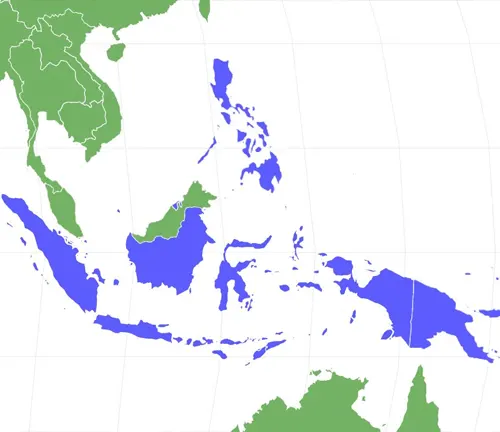
Physical Characteristics
Size and weight
Western Tarsiers are among the smallest primates, typically measuring between 10 to 15 centimeters in length, excluding their long tails. They have a slender build and weigh between 80 to 160 grams, making them incredibly lightweight.
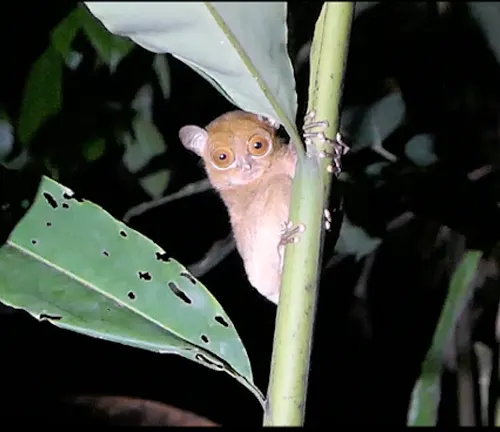

Fur color and texture
The fur of Western Tarsiers varies in color, ranging from light brown to gray. This coloration helps them blend into their forest habitat and provides camouflage from predators. Their fur is soft and dense, aiding in insulation and temperature regulation in the tropical environments they inhabit.
Facial features
Western Tarsiers are characterized by their distinctive facial features, including large, round eyes that dominate their faces. These large eyes are adapted for excellent night vision, allowing them to navigate and hunt effectively in low light conditions. They also have small ears and a small, elongated muzzle, giving them a unique appearance compared to other primates. Overall, their facial features contribute to their remarkable ability to thrive in the forest canopy.

Behavior and Lifestyle
Nocturnal habits
Western Tarsiers are primarily nocturnal creatures, meaning they are most active during the night. They spend their days resting in dense vegetation, typically curled up in a hidden spot among branches or tree hollows. As the sun sets and darkness falls, Western Tarsiers emerge from their daytime shelters to begin their foraging activities. Their large, sensitive eyes are well-adapted to low light conditions, allowing them to navigate and hunt for prey effectively in the darkness of the forest.
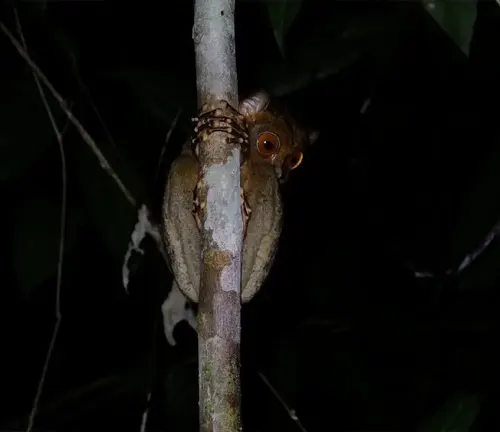
Social structure
Western Tarsiers generally exhibit a solitary lifestyle, preferring to live alone or in small family groups consisting of a mated pair and their offspring. However, they may also engage in loose associations with other tarsiers in their vicinity, especially around shared food sources or favored resting spots. While they are not highly social animals compared to some other primates, they may engage in grooming behaviors or vocalizations to communicate with conspecifics when necessary.
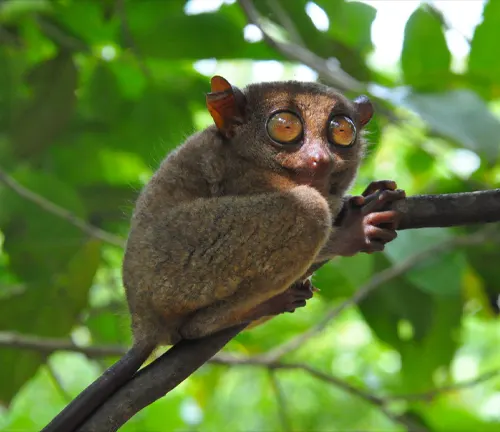
Communication methods
Western Tarsiers communicate using a variety of vocalizations, including chirps, clicks, whistles, and trills. These vocalizations serve several purposes, including establishing territory, warning of potential threats, and attracting mates during the breeding season. Each vocalization has its own distinct meaning, allowing tarsiers to convey information effectively to other members of their social group or neighboring individuals. Additionally, they may also use scent marking and body postures to communicate non-verbally with conspecifics in their environment.
Diet and Feeding Habits
Main dietary preferences
Western Tarsiers are primarily insectivorous, meaning that insects form the main component of their diet. They have a diverse palate and feed on a variety of insects, including crickets, grasshoppers, beetles, moths, and spiders. These small prey items are abundant in the forest canopy where tarsiers spend most of their time, making them readily available sources of food. Additionally, Western Tarsiers may also consume small vertebrates such as lizards, tree frogs, and small birds when the opportunity arises.
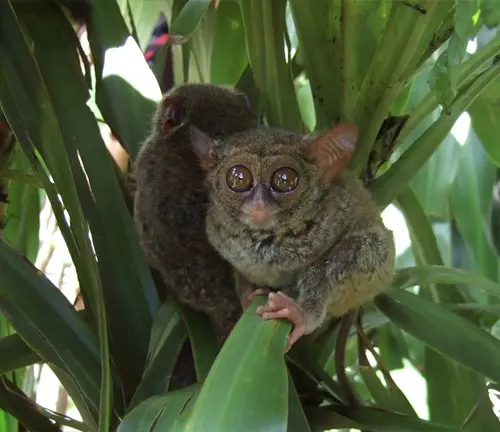
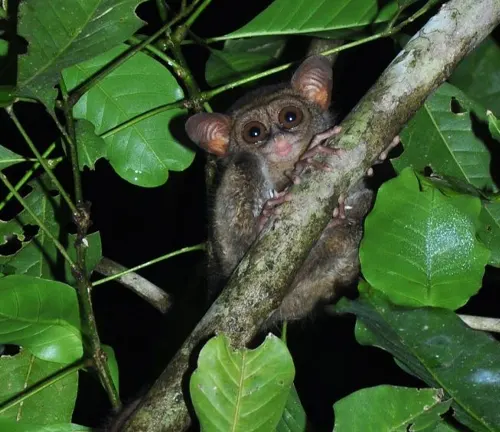
Hunting techniques
Western Tarsiers are adept hunters, employing a combination of stealth, agility, and keen senses to capture their prey. One of their primary hunting techniques is known as the sit-and-wait strategy. Tarsiers will perch motionless on a branch or tree trunk, using their large, forward-facing eyes to scan the surrounding area for signs of movement. Once they detect prey within striking distance, they will make a sudden, precise leap to catch it with their sharp claws and teeth. This method allows tarsiers to conserve energy while maximizing their chances of capturing fast-moving insects.
Additionally, Western Tarsiers may also engage in active hunting pursuits, chasing down prey on foot or leaping between branches in pursuit of fleeing insects. Their agile movements and lightning-fast reflexes make them formidable hunters in the dense vegetation of the forest canopy.
Reproduction and Offspring
Mating rituals
Mating rituals among Western Tarsiers typically involve elaborate courtship displays and vocalizations to attract potential mates. Male tarsiers may engage in territorial behaviors, such as scent marking and vocalizing loudly to announce their presence and assert dominance over a territory. Once a male establishes his territory, he may perform acrobatic displays, such as leaping between branches or hanging upside down, to impress a female. If the female is receptive, she will respond to the male’s advances with her own vocalizations and body language, indicating her willingness to mate. Mating usually occurs during the female’s fertile period, which may vary depending on environmental factors and the availability of resources.
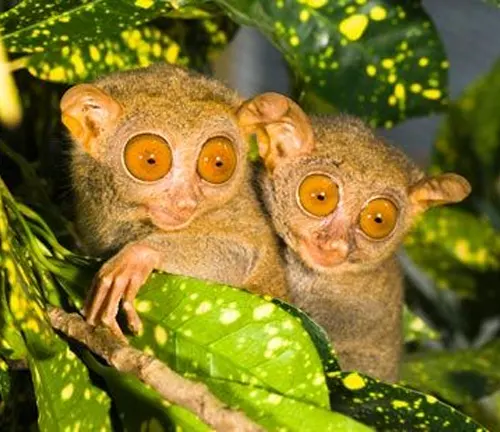
Gestation period
The gestation period for Western Tarsiers is approximately six months. After mating, the female tarsier will undergo a period of pregnancy lasting around six months before giving birth to a single offspring. The exact length of the gestation period may vary slightly depending on factors such as environmental conditions and the health of the mother tarsier.
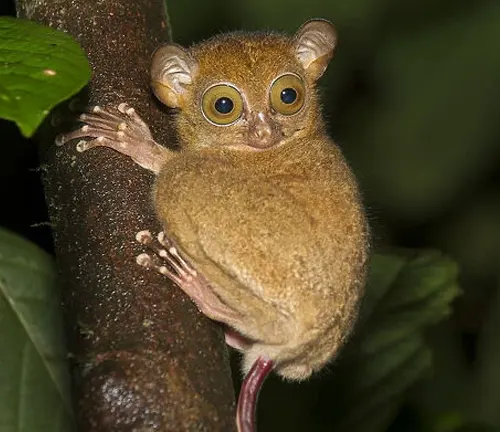
Care for young ones
After giving birth, the mother tarsier provides extensive care for her offspring. Newborn tarsiers are born relatively undeveloped and are completely dependent on their mother for nourishment and protection. The mother tarsier carries her young offspring clinging to her fur, keeping them close and providing warmth and security. She will nurse her offspring with milk produced in her mammary glands until they are old enough to begin eating solid food. As the young tarsier grows, the mother teaches them essential skills for survival, such as hunting techniques and how to navigate the forest canopy. The mother’s care and guidance are crucial for the young tarsier’s development and eventual independence.
Conservation Status
Threats to Western Tarsiers
Western Tarsiers face several threats to their survival, primarily due to human activities and habitat loss. One of the major threats is deforestation, which results in the destruction and fragmentation of their natural habitat. As forests are cleared for agriculture, logging, and human settlement, tarsiers lose crucial areas for foraging, nesting, and breeding. Additionally, habitat fragmentation isolates tarsier populations, reducing genetic diversity and making them more vulnerable to extinction. Other threats include illegal hunting and capture for the pet trade, as well as pollution and disturbance from human activities.
Conservation efforts
Efforts are underway to protect Western Tarsiers and their habitat through various conservation initiatives. Conservation organizations work to establish protected areas, such as national parks and wildlife reserves, where tarsiers can thrive without the threat of habitat destruction. These protected areas provide essential habitat for tarsiers and other wildlife, safeguarding biodiversity and ecosystem health. Additionally, conservation efforts focus on raising awareness about the importance of tarsier conservation among local communities, policymakers, and the general public.
Educational programs, community outreach, and ecotourism initiatives help promote sustainable practices and reduce human impacts on tarsier populations. By addressing the underlying causes of habitat loss and fragmentation, conservation efforts aim to ensure the long-term survival of Western Tarsiers and preserve their unique place in the ecosystems of Southeast Asia.
Interaction with Humans
Cultural significance
Western Tarsiers hold cultural significance in some indigenous communities across Southeast Asia, where they are often revered as spiritual beings or symbols of good luck and fortune. In these cultures, tarsiers may feature in folklore, traditional ceremonies, and rituals, playing a role in shaping local beliefs and customs. Additionally, Western Tarsiers may be depicted in art, literature, and traditional crafts, further highlighting their importance in local cultures. However, in other areas, tarsiers may be viewed differently, with some communities considering them as pests or nuisances due to their nocturnal activities and vocalizations.
Ecotourism impact
Western Tarsiers are a popular attraction for ecotourists seeking to observe these fascinating creatures in their natural habitat. Ecotourism activities, such as guided night walks and wildlife watching tours, provide opportunities for visitors to encounter tarsiers in the wild and learn about their behavior and ecology. In some regions, ecotourism centered around tarsier conservation has provided economic benefits to local communities, generating income through tourism-related services and employment opportunities. However, unregulated or unsustainable ecotourism can have negative impacts on tarsier populations and their habitat.
Overcrowding, habitat disturbance, and excessive noise from tourists can stress tarsiers and disrupt their natural behaviors. Therefore, it is essential to implement responsible ecotourism practices that prioritize the well-being of tarsiers and their habitat while providing meaningful experiences for visitors. By promoting sustainable ecotourism initiatives and supporting conservation efforts, stakeholders can ensure that Western Tarsiers continue to contribute positively to local economies and ecosystems for generations to come.
Different Species
Philippine Tarsier
(Tarsius syrichta)
Found in the Philippines, particularly in the islands of Bohol, Samar, Leyte, and Mindanao. It is known for its large eyes and long hind limbs.
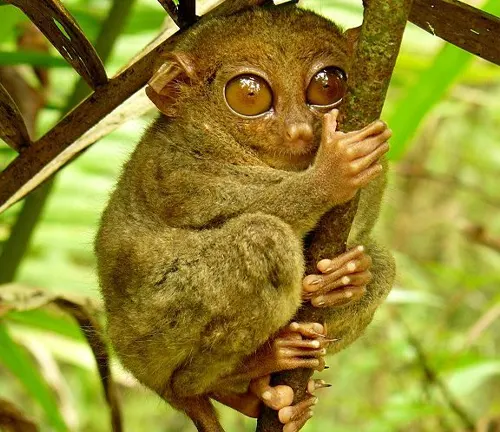

Horsfield’s Tarsier
(Tarsius bancanus)
Native to Borneo, Sumatra, and nearby islands in Indonesia and Malaysia. It inhabits various forest types, including mangrove swamps and lowland rainforests.
Dian’s Tarsier
(Tarsius dentatus)
Endemic to the island of Sulawesi in Indonesia, Dian’s Tarsier is distinguished by its relatively large size and distinctive dentition.

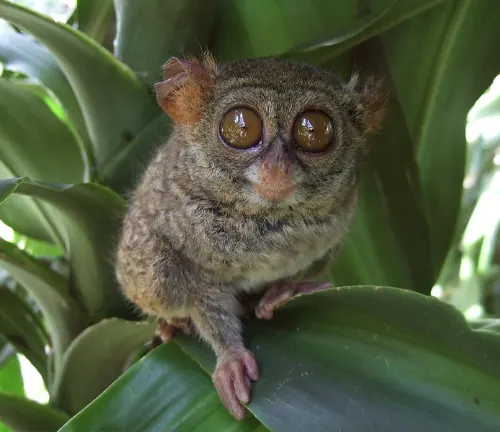
Spectral Tarsier
(Tarsius spectrum)
Found in Indonesia, Malaysia, and Thailand, the Spectral Tarsier is known for its vocalizations and ability to communicate over long distances.
Pygmy Tarsier
(Tarsius pumilus)
Once thought to be extinct, the Pygmy Tarsier was rediscovered in Indonesia in 2008. It is the smallest known primate species, with a body length of around 10 centimeters.
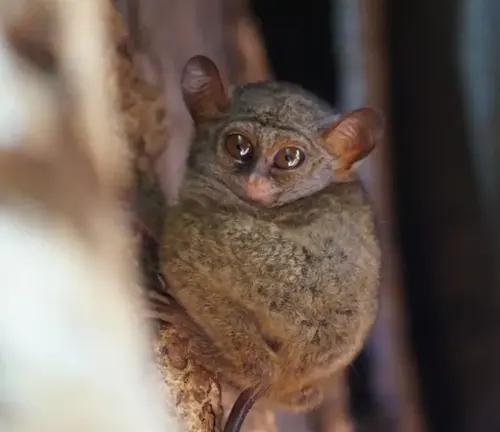
Frequently Asked Questions (FAQs)
- Are Western Tarsiers strictly nocturnal?
Yes, Western Tarsiers are primarily nocturnal, meaning they are most active during the night and rest during the day. - What do Western Tarsiers eat in the wild?
Western Tarsiers are insectivorous, feeding primarily on insects such as crickets, grasshoppers, and beetles. They may also consume small vertebrates like lizards and small birds. - How do Western Tarsiers communicate with each other?
Western Tarsiers communicate using a variety of vocalizations, including chirps, clicks, and whistles. These sounds help them establish territory, attract mates, and warn of potential threats. - Do Western Tarsiers live in groups or are they solitary animals?
Western Tarsiers are mostly solitary animals, although they may form small family groups or loose associations in certain situations. - What is the gestation period of Western Tarsiers?
The gestation period for Western Tarsiers is approximately six months, after which the female gives birth to a single offspring. - How do Western Tarsiers defend themselves from predators?
Western Tarsiers rely on their agility and ability to escape into the dense foliage of the forest to evade predators. They may also emit alarm calls to alert others of potential threats. - What is the average lifespan of Western Tarsiers in captivity?
In captivity, Western Tarsiers can live up to around 20 to 25 years with proper care and nutrition. - Do Western Tarsiers groom themselves like other primates?
Yes, Western Tarsiers engage in grooming behaviors to maintain their fur and remove parasites. They may also groom each other as a form of social bonding. - How do Western Tarsiers navigate through their environment at night?
Western Tarsiers have large eyes adapted for night vision, allowing them to see in low light conditions. They also rely on their keen sense of hearing and sense of touch to navigate through the forest canopy. - What are the main threats to Western Tarsiers in their natural habitat?
The main threats to Western Tarsiers include habitat loss and fragmentation due to deforestation, agricultural expansion, and logging activities. They are also vulnerable to hunting and capture for the illegal pet trade. - Are there any conservation efforts aimed at protecting Western Tarsiers?
Yes, conservation organizations are working to establish protected areas, conduct research on tarsier populations, and raise awareness about the importance of their conservation. Efforts are also being made to address the underlying causes of habitat loss and fragmentation.




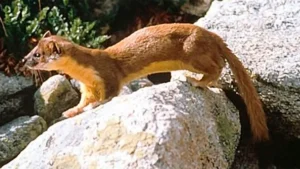





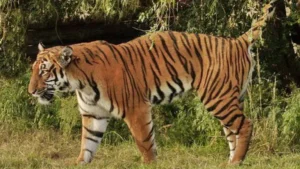

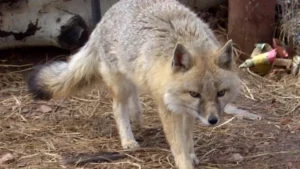

Leave your comment